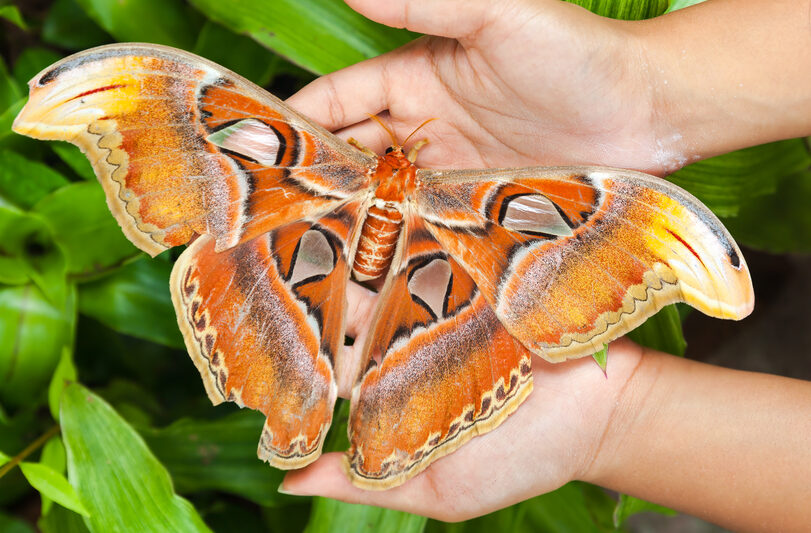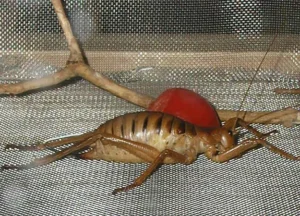The Biggest Bugs in the World: Exploring the Largest Insects on Earth

The biggest bugs in the World are characterized by having unique capabilities, but their size or extent makes them dominant in the ecosystem among insects.
As we explore nature, we can encounter small threats that, while most are not a danger to humans, can still surprise you.
We’ve heard a lot about the Titan beetle or the Goliath beetle, but there are other species among the Biggest Bugs in the World.
They cannot be compared to the prehistoric insects, but the size of the largest bugs in the world today continues to draw attention from locals and visitors alike.
In some cases, these largest bugs were actually even bigger in the past, but others have grown and become enormous due to natural selection.
The reason why insects evolved to such large sizes remains a mystery for scientists to solve.
One of the places with the greatest diversity of large insects is Latin America, but it is the Amazon rainforest that hosts many of these insect kings in its areas.
READ HERE: DISCOVER THE BEST PLACES TO VISIT IN MEXICO.
It is estimated that in the neotropical region, which ranges from Mexico to southern South America, several insects with considerable size reside.
These fascinating creatures represent a fundamental part of the ecosystem and are the subject of study by expert entomologists.
Yes, an entomologist is someone who studies insects and their interaction with the rest of nature.

Growth of the Biggest Bugs in the World
In reality, the question is reversed, as many of the the biggest bugs in the World simply became smaller. These current natural oddities are actually distant relatives of those that were enormous in previous eras, during prehistory.
Some theories suggest that insects became smaller due to atmospheric changes, leading to a reduction in their size.
In fact, it is estimated that 300 million years ago, during the Paleozoic period, there was an abundance of plants and rare giant insects.
For example, there were dragonflies with wingspans of over half a meter. It is believed that the oxygen content of the air at that time was 35%, much higher than today’s 21%.
The reason is that insects do not breathe like we do and do not have blood to transport the precious gas inside their bodies.
Bugs take in oxygen directly from the atmosphere and expel carbon dioxide through tubes distributed throughout their bodies called tracheae, which are connected to exterior openings known as spiracles.
This is one of the reasons why some bugs grow larger than others, among various other factors.
For example, Hercules beetles are a particular case in comparison. It was found that the tracheae of the larger beetles required a volume proportion 20% greater than predicted.
This extra volume is because the tubes must thicken to allow more air to meet the oxygen demand.
Using this increase in observed disproportion, researchers have calculated that beetles cannot grow larger than 15 cm.
This is precisely the size of the Titanus giganteus beetle, which lives in South America and is the largest known beetle.
To learn more about birds and insects in Mexico, you can read this article:EXPLORING TIERRA CALIENTE MEXICO.

The Longest Bugs in the World
Among the biggest bugs in the world, we have to mention the Phasmatidae species, whose family has the skillful ability to blend in with branches or sticks. Here are some of the longest bugs in the world:
Phryganistria chinensis (Chinese Stick Insect):
A museum in southern China has determined that a stick insect of a new species found in 2014, measuring 62.4 centimeters in length, is the biggest bugs in the world known so far.
The insect, almost 10 centimeters longer than the previous record holder, is on display at the Insect Museum of West China in Chengdu (southwest China) and was found during fieldwork in the Guangxi region, near the Chinese border with Vietnam and Laos.
Phobaeticus chani (Chan’s Megastick):
Next on the podium is the second biggest known insect, with a specimen preserved in the Natural History Museum in London, measuring 56.7 centimeters in length with extended legs, and 35.7 centimeters counting only its body.
So far, very few specimens of this species are known, all of which were found in the Malaysian state of Sabah on the island of Borneo.
Phobaeticus serratipes (Malayan Stick Insect):
Phobaeticus serratipes, better known as the giant stick insect, was considered the longest insect in the world until a new species, Phobaeticus chani, was discovered in 2008, surpassing it in length.
It is the least colorful of this family, capable of reaching about 55 centimeters in length with extended legs; it primarily feeds on conifers, mangoes, and guavas. Its natural habitat is Malaysia and Singapore, making its presence in the rest of the world almost nonexistent.
The Heaviest Bugs in the World
Since we’ve looked at the biggest bugs in the world, we can’t overlook the heavyweights, those bugs that are so heavy they draw attention. Among the biggest bugs in the world, these are the heaviest:
Deinacrida heteracantha (Giant Wētā)
Native to New Zealand, wētās are large, wingless, nocturnal orthopterans. They are primarily herbivorous but are also known to eat insects.
This insect weighs up to 71 grams and measures up to 10 centimeters without counting its long antennae or powerful legs, making it one of the largest documented insects in history.
Megasoma actaeon
Known as the Actaeon beetle, it is one of the largest beetles, measuring up to 7 centimeters wide and having a body length of approximately 5 to 12 centimeters.
Males can reach up to 13 cm in length and 4 cm in thickness.
They can be found in French Guiana, Colombia, Brazil, Ecuador, Peru, Suriname, Guyana, Mexico, Venezuela, Bolivia, and Panama. Males can weigh up to 80 grams.
Goliathus goliatus (Goliath Beetle)
Goliath beetles are the most massive insects, although not the longest. They live in most African rainforests and feed on nectar, pollen, fruit, and sap. Their larvae need a protein-rich diet, such as decaying carcasses.
An adult Goliath beetle measures 6 to 12 cm in length, and its larva can weigh more than one hundred grams. They are so large that when they fly, they produce a sound reminiscent of a helicopter.
This is why they are among the biggest bugs in the world.

Other Impressive Insects in the World
Besides the mentioned species, there are other large bugs in the world that impress with their size, including:
Atlas Moth
Among butterflies, this one is particularly impressive due to its size. It is a nocturnal moth widely distributed in Southeast Asia and India.
With a wingspan of 26 cm, it also has the largest wing surface area among lepidopterans, around 400 cm².
Titan Beetle
The Titan beetle, scientifically called Titanus giganteus, from the Cerambycidae family, is one of the most striking insects in the world due to its strength and size.
This beetle species belongs to the Coleoptera order, known for having large chewing mouthparts and for the transformation of their front wings into rigid pieces used as a defense mechanism.
Queen Alexandra’s Birdwing
Another fascinating insect in nature is the Queen Alexandra’s birdwing. It is considered the largest butterfly in the world and is found in New Guinea (Papua New Guinea).
The female can reach a wingspan of 31 cm, a body length of 8 cm, and a mass of 12 grams, all of which are enormous measurements for a butterfly.






